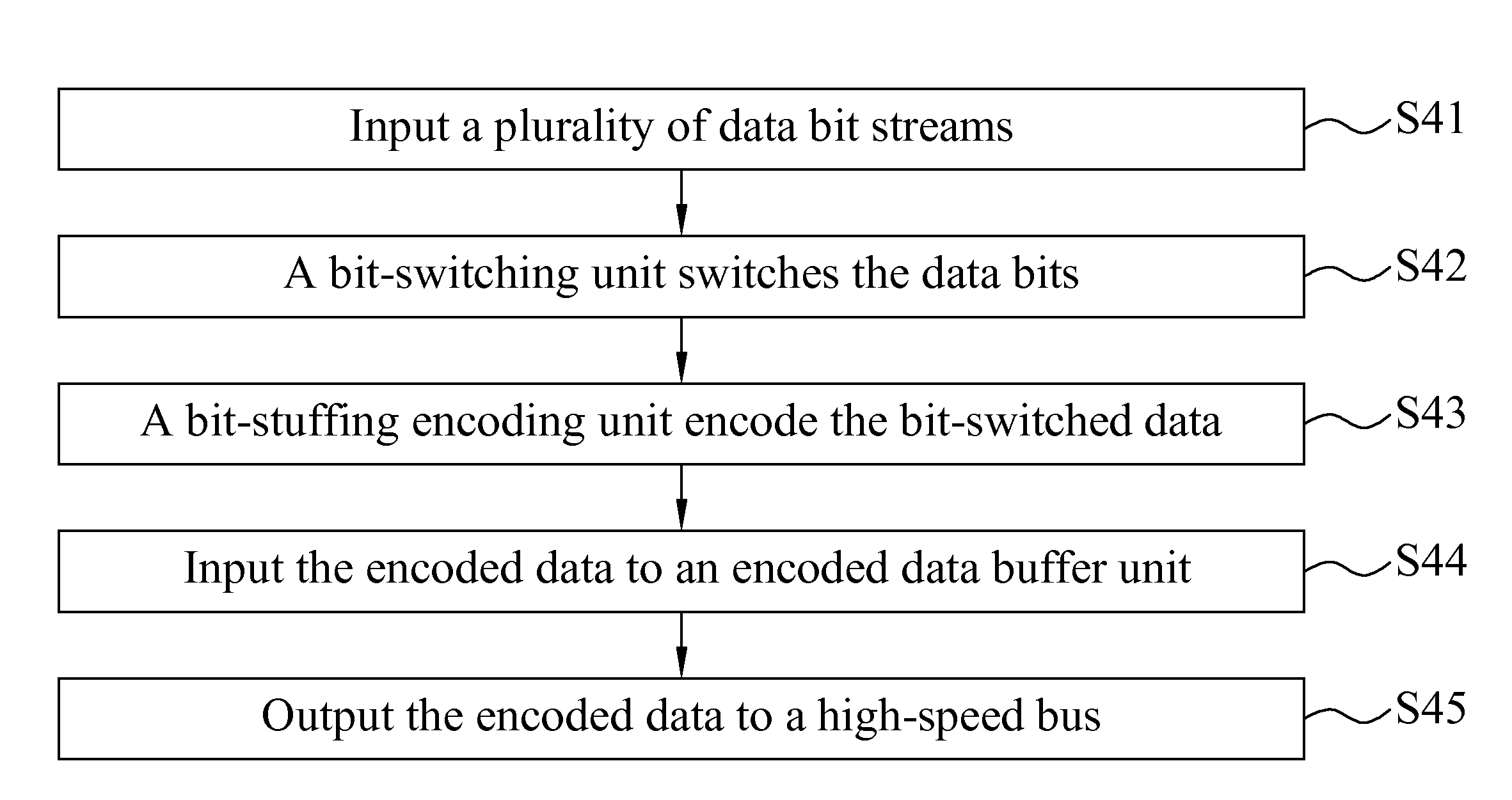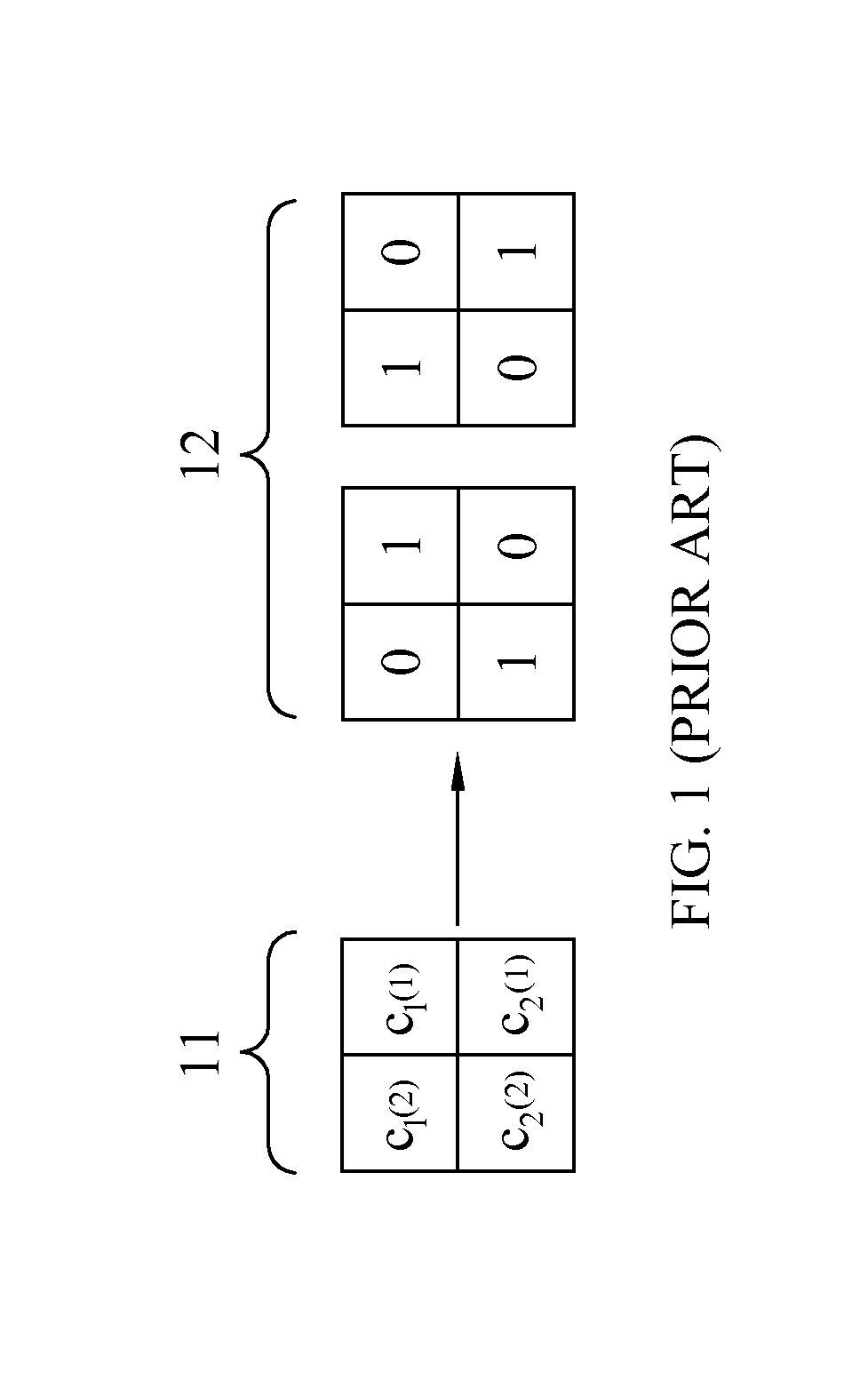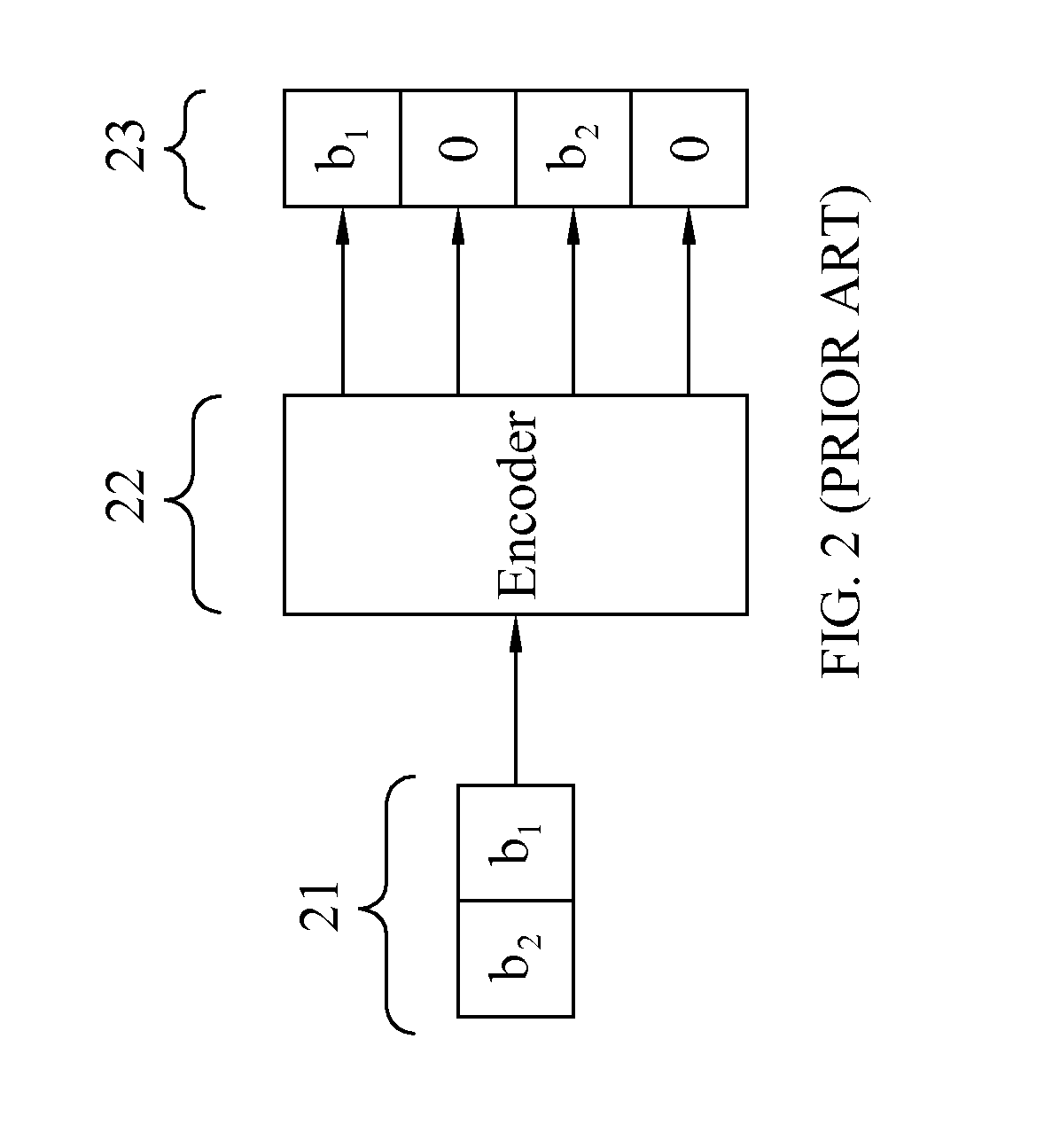Bit-stuffing method for crosstalk avoidance in high-speed buses
a high-speed bus and crosstalk avoidance technology, applied in the field of bus encoding, can solve the problems of unfavorable signal transmission, unplanned signal interference, and inability to easily shorten the propagation delay of transmitted bits b>11/b> over the bus wires
- Summary
- Abstract
- Description
- Claims
- Application Information
AI Technical Summary
Benefits of technology
Problems solved by technology
Method used
Image
Examples
Embodiment Construction
Please refer to FIG. 4. In the bit-stuffing method for crosstalk avoidance in high-speed buses according to the present invention, the following steps are included.
In step S41, a plurality of data bit streams are inputted to a data input buffer. Following in step S42, the data input buffer parallelly inputs data bits of the data bit streams to a bit-switching unit, and the bit-switching unit switches the data bits to generate bit-switched data. Then, in step S43, the bit-switched data are parallelly inputted to a bit-stuffing encoding unit, and the bit-stuffing encoding unit performs encoding on the bit-switched data to generate encoded data. Next, in step S44, the encoded data are inputted to an encoded data buffer. Finally, in step S45, the encoded data buffer outputs the encoded data to a high-speed bus.
Please refer to FIG. 5 that is a configuration diagram showing the encoding application of the bit-stuffing method for crosstalk avoidance in high-speed buses according to the pre...
PUM
 Login to View More
Login to View More Abstract
Description
Claims
Application Information
 Login to View More
Login to View More - R&D
- Intellectual Property
- Life Sciences
- Materials
- Tech Scout
- Unparalleled Data Quality
- Higher Quality Content
- 60% Fewer Hallucinations
Browse by: Latest US Patents, China's latest patents, Technical Efficacy Thesaurus, Application Domain, Technology Topic, Popular Technical Reports.
© 2025 PatSnap. All rights reserved.Legal|Privacy policy|Modern Slavery Act Transparency Statement|Sitemap|About US| Contact US: help@patsnap.com



